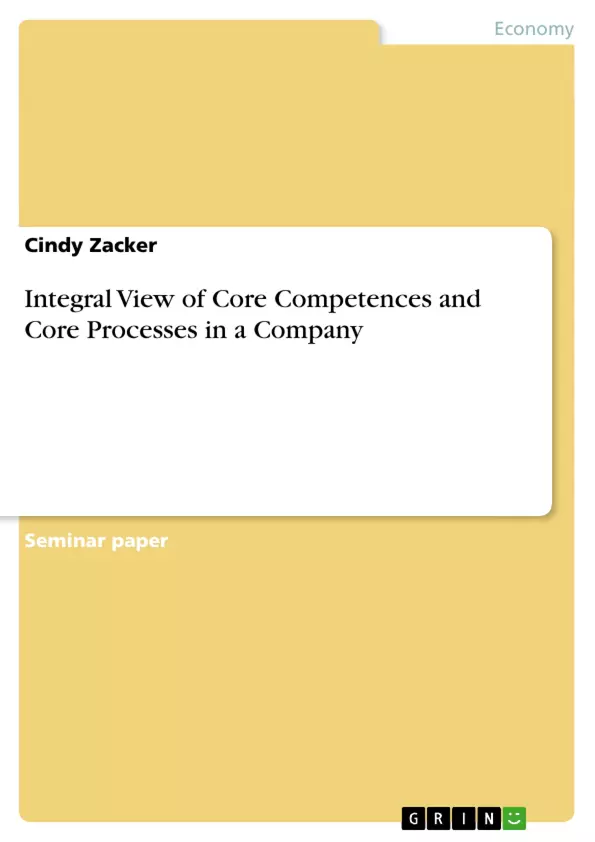This paper deals with the concepts of core competencies and core processes within the scope of business sciences. It will first give an overview of the classification of the concepts and will then move on explaining how these ideas are implemented within the company. The importance of professional skills is identified and examples will provide a more practical insight into the issue.
Inhaltsverzeichnis (Table of Contents)
- Abbreviations and Table of Figures
- Abstract
- 1 Introduction
- 2 The core of a competence
- 2.1 Identification of strategic success factors
- 2.2 Business competence
- 2.3 The concept of core competencies
- 3 The core of a business process
- 3.1 Business process
- 3.2 Core business process
- 3.3 The concepts behind the core process
- 4 Translating the idea of core competencies into core processes
- 4.1 From strategy to operation
- 4.2 Organizational configuration to support core competence and core process
- 4.3 Managerial functions
- 5 Conclusion
- Appendix
- References
Zielsetzung und Themenschwerpunkte (Objectives and Key Themes)
This paper investigates the interconnected concepts of core competencies and core processes within the context of business sciences. It aims to provide a comprehensive overview of these concepts, explaining their classification, implementation within a company, and practical application through illustrative examples. The paper emphasizes the importance of professional skills in building and leveraging core competencies and processes.
- Classification and definition of core competencies and core processes
- Implementation of core competencies and core processes within a company
- The role of professional skills in building and leveraging core competencies
- The relationship between core competencies and core processes
- Practical examples and case studies to illustrate the concepts
Zusammenfassung der Kapitel (Chapter Summaries)
- Introduction: This chapter provides a brief overview of the topic and sets the context for the subsequent chapters.
- The core of a competence: This chapter delves into the concept of core competencies, exploring their identification, relevance to business success, and theoretical frameworks.
- The core of a business process: This chapter focuses on the concept of core business processes, defining their role within a company, and exploring the underlying principles.
- Translating the idea of core competencies into core processes: This chapter examines the connection between core competencies and core processes, analyzing how strategic goals are translated into operational activities. It also investigates organizational structures and managerial functions that support the implementation of core competencies and processes.
Schlüsselwörter (Keywords)
The paper focuses on core competencies, core processes, strategic success factors, business competence, organizational configuration, managerial functions, professional skills, and their application within the context of business sciences.
- Citar trabajo
- Cindy Zacker (Autor), 2004, Integral View of Core Competences and Core Processes in a Company, Múnich, GRIN Verlag, https://www.grin.com/document/25765



